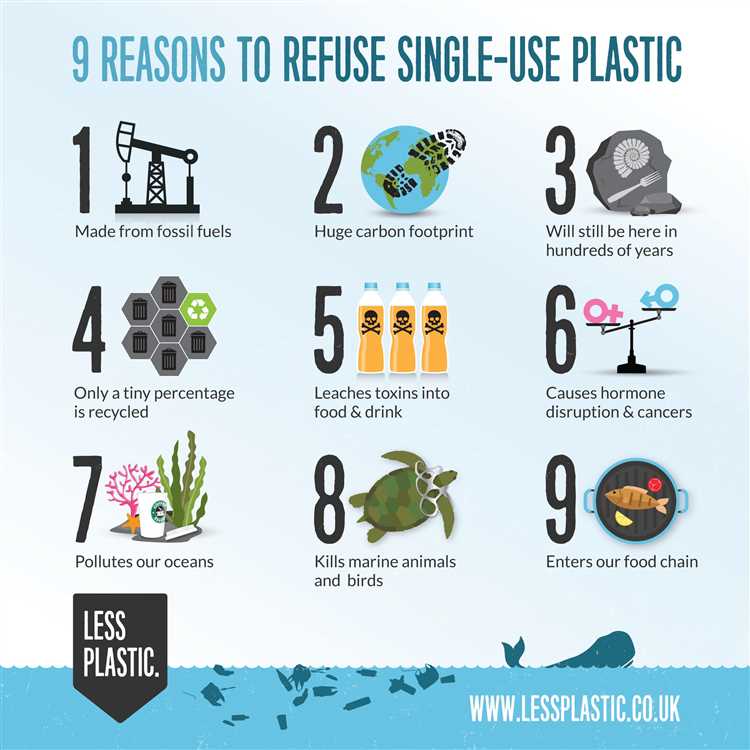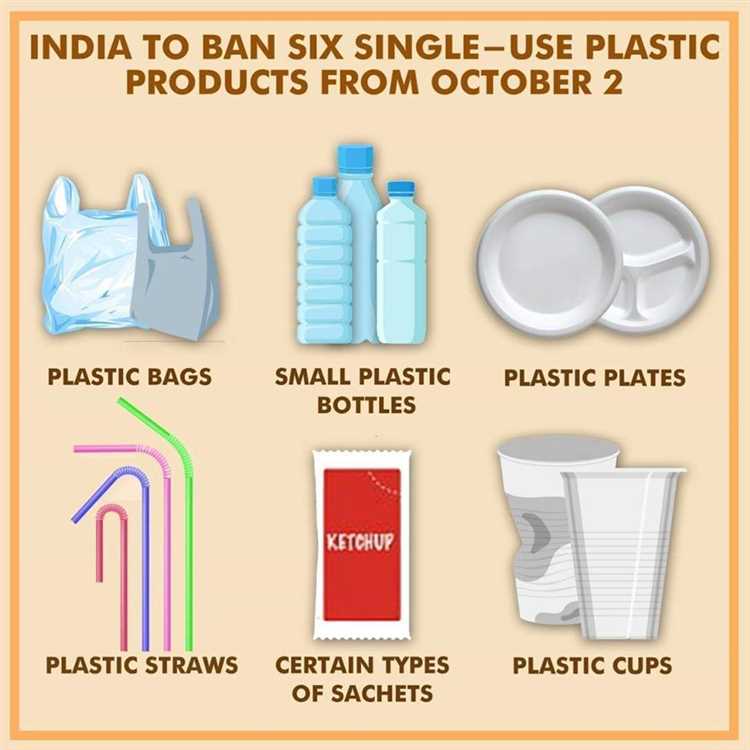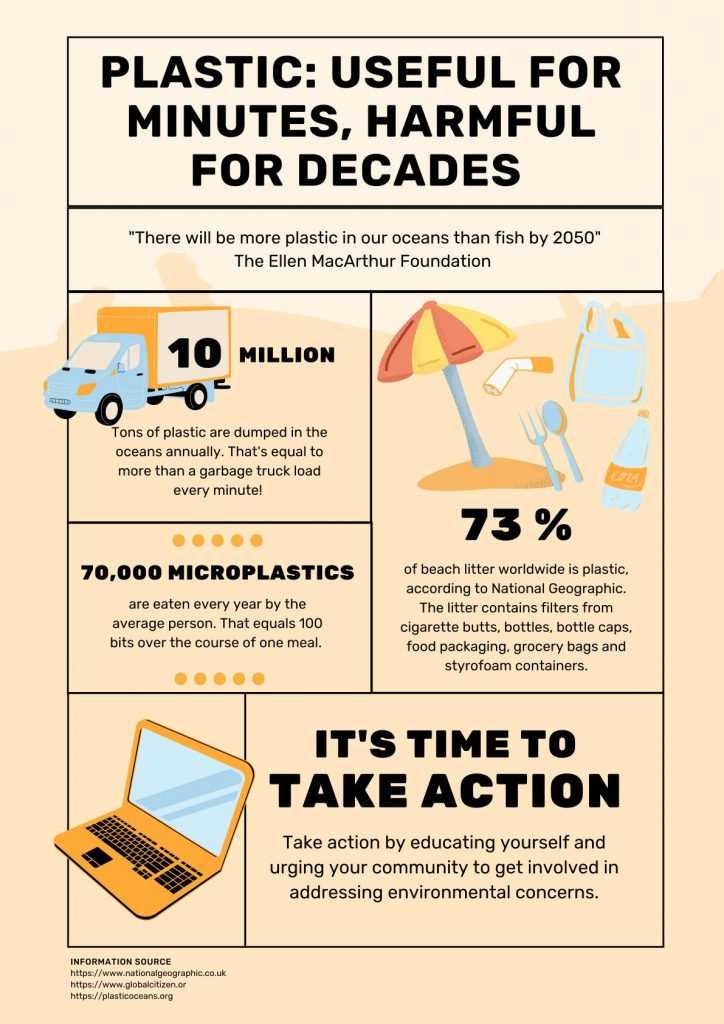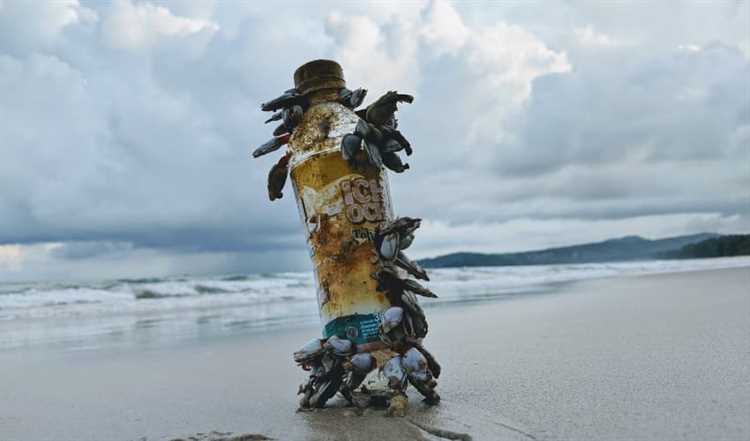Plastic pollution has become a global crisis, threatening our ecosystems and endangering marine life. Single-use plastics, in particular, have gained widespread attention due to their significant impact on the environment. While all single-use plastics contribute to the problem, some types are more harmful than others.
Perhaps one of the most notorious culprits is plastic bags. Lightweight and easily carried by the wind, these bags often end up in rivers, lakes, and oceans, where they pose a grave threat to marine life. Animals can mistake plastic bags for food, leading to ingestion and suffocation. Moreover, the decomposition process of plastic bags takes hundreds of years, exacerbating the issue.
Another harmful single-use plastic is plastic straws. These small tubes may seem insignificant, but in reality, they contribute to the plastic pollution crisis in significant ways. Plastic straws are not easily recyclable and are often discarded improperly, ending up in landfills or the ocean. Marine animals can ingest or become entangled in them, causing severe harm to their health and ecosystems.
- The impact of plastic waste on the environment
- The importance of reducing plastic waste
- The dangers of plastic straws
- The environmental consequences of plastic bags
- 1. Pollution
- 2. Non-biodegradability
- 3. Energy and resource consumption
- 4. Lack of recycling
- The harmful effects of plastic bottles
- Pollution
- Marine life threats
- FAQ:
- Which single-use plastic is the most harmful for the environment?
- Are plastic bottles more harmful than plastic bags?
- What about plastic straws? Are they harmful to the environment too?
- Are there any alternatives to single-use plastic that are less harmful to the environment?
- What can individuals do to reduce their use of harmful single-use plastics?
- Which single-use plastic is the most harmful for the environment?
- Are all single-use plastics equally harmful to the environment?
The impact of plastic waste on the environment
Plastic waste has become one of the most pressing environmental issues of our time. The production, consumption, and disposal of plastic products have led to a significant negative impact on our planet’s ecosystems and natural resources.
One of the most concerning aspects of plastic waste is its long lifespan. Plastic takes hundreds of years to decompose, and during this time, it accumulates in landfills, polluting the soil and water. It also poses a serious threat to marine life, as plastic debris often ends up in oceans and seas, harming marine animals and damaging their habitats.
Plastic waste also contributes to air pollution. When plastic products are burned in open-air incineration, toxic gases are released into the atmosphere, leading to respiratory problems and other health issues for humans and wildlife alike.
The importance of reducing plastic waste

In order to mitigate the negative impacts of plastic waste on the environment, it is imperative that we take action to reduce our consumption of single-use plastics. This can be done through various measures, such as promoting the use of reusable alternatives, implementing effective recycling systems, and encouraging individuals and businesses to adopt sustainable practices.
Sustainable solutions for plastic waste
Several sustainable solutions exist to tackle the issue of plastic waste. These include:
- Biodegradable and compostable alternatives: Research and development efforts are underway to create plastic alternatives that are biodegradable and can be broken down naturally over time.
- Plastic recycling: By improving recycling systems and raising awareness about the importance of recycling, we can divert more plastic waste from landfills and reduce the need for virgin plastic production.
In conclusion, plastic waste poses a significant threat to the environment. The long lifespan of plastic and its detrimental effects on ecosystems, wildlife, and human health make it a pressing issue that requires immediate action. By reducing our consumption of single-use plastics and promoting sustainable alternatives and recycling, we can help mitigate the environmental impact of plastic waste.
The dangers of plastic straws
Plastic straws are one of the most harmful types of single-use plastic for the environment. These small, lightweight items may seem insignificant, but their impact on the environment is significant and far-reaching.
One of the primary dangers of plastic straws is the fact that they are not biodegradable. This means that once they are discarded, they can persist in the environment for hundreds of years. As they break down into smaller pieces, they can release toxic chemicals into the soil and water, posing a serious threat to wildlife and marine life.
In addition to their long lifespan, plastic straws are also a major contributor to plastic pollution. It is estimated that billions of plastic straws are used and discarded each year, ending up in landfills, rivers, and oceans. Not only do they clutter our natural spaces, but they also pose a direct danger to animals, who can mistake them for food and end up choking or suffering from internal injuries.
The production of plastic straws also requires the extraction of fossil fuels, contributing to carbon emissions and climate change. Furthermore, plastic straws are typically not recycled due to their small size and low value, leading to an even higher accumulation of plastic waste in the environment.
Fortunately, there are alternatives to plastic straws that are much less harmful to the environment. Reusable metal or bamboo straws, as well as biodegradable paper straws, are gaining popularity as more people become aware of the dangers of plastic straws. By opting for these alternatives or simply refusing a straw when possible, individuals can make a significant impact in reducing plastic waste and protecting the environment.
| Dangers of plastic straws: |
|---|
| – Non-biodegradable, long lifespan |
| – Release toxic chemicals |
| – Contribute to plastic pollution |
| – Direct danger to wildlife |
| – Extraction of fossil fuels |
| – Low recycling rate |
| – Alternative options available |
The environmental consequences of plastic bags
Plastic bags have become an incredibly common and convenient item in our daily lives. However, their environmental impact is significant and detrimental. Here, we will discuss some of the major consequences that plastic bags have on the environment.
1. Pollution

Plastic bags are a major contributor to pollution, particularly in aquatic environments. When plastic bags find their way into rivers, lakes, and oceans, they can cause immense harm to marine life. Marine animals may mistake plastic bags for food and end up consuming them, leading to injury or even death. The presence of plastic bags in water bodies can also disrupt the ecosystem by clogging waterways and obstructing the movement of aquatic organisms.
2. Non-biodegradability

One of the most concerning aspects of plastic bags is their non-biodegradable nature. Unlike organic materials, such as paper or cloth, plastic bags cannot be easily broken down by natural processes. Instead, they persist in the environment for hundreds of years, releasing harmful chemicals and microplastics as they slowly degrade. This long-lasting presence of plastic bags in landfills and natural habitats exacerbates the pollution problem and poses a severe threat to wildlife.
3. Energy and resource consumption
The production of plastic bags requires a significant amount of energy and resources. The extraction and manufacturing of the raw materials (petroleum and natural gas) used in plastic bag production contribute to carbon emissions and environmental degradation. Additionally, the energy-intensive process of converting these raw materials into plastic bags further exacerbates the ecological impact. Given their short lifespan and disposable nature, plastic bags represent a wasteful use of finite resources.
4. Lack of recycling
Despite efforts to promote recycling, plastic bags are notoriously difficult to recycle. The lightweight nature of plastic bags often causes them to get caught in recycling machinery, leading to inefficiencies and potential damage to the equipment. Consequently, many recycling facilities do not accept plastic bags, resulting in a low recycling rate. This further contributes to the accumulation of plastic bags in landfills or the natural environment, perpetuating the environmental consequences.
In conclusion, plastic bags have a range of severe environmental consequences. Their pollution, non-biodegradability, energy and resource consumption, and lack of recycling options all contribute to the overall harm caused by these single-use plastic items. To reduce their impact, it is crucial for individuals, businesses, and governments to actively seek alternatives to plastic bags and promote sustainable practices.
The harmful effects of plastic bottles
Plastic bottles are a common single-use plastic item that is widely used around the world. However, their convenience and practicality come with significant harmful effects on the environment.
Pollution

Plastic bottles contribute to pollution in various ways. Firstly, their production involves the extraction and consumption of natural resources, such as oil and gas, which are non-renewable and have significant environmental impacts. Secondly, the manufacturing process produces greenhouse gas emissions, contributing to climate change.
Once discarded, plastic bottles often end up in landfills or improperly disposed of in the environment. They take hundreds of years to decompose, and during this process, they release toxic chemicals into the soil and groundwater. Moreover, when plastic bottles are littered, they can clog drains and waterways, leading to blockages that cause flooding and further environmental damage.
Marine life threats
One of the most severe consequences of plastic bottles is their impact on marine life. When not properly disposed of, they can make their way into oceans and water bodies, where they pose a significant threat to marine animals.
Marine animals, such as sea turtles, dolphins, and whales, often mistake plastic bottles for food and ingest them. This can lead to internal injuries, digestive blockages, and eventual death. Additionally, plastic bottles can entangle marine animals, causing physical harm and impairing their ability to swim and hunt for food.
The pollution caused by plastic bottles also affects the delicate balance of marine ecosystems. Microplastics, tiny particles of plastic that result from the breakdown of larger plastic items, can accumulate in the ocean and harm marine organisms at the bottom of the food chain. This can have far-reaching consequences on the entire ecosystem.
In conclusion, plastic bottles have a detrimental impact on the environment. Their production, improper disposal, and contribution to pollution and threats to marine life make them one of the most harmful single-use plastic items. Efforts should be made to reduce their usage and promote more sustainable alternatives to mitigate their harmful effects.
FAQ:
Which single-use plastic is the most harmful for the environment?
Plastic bags are considered one of the most harmful single-use plastics for the environment. They are not biodegradable and often end up in landfills or in the ocean, where they take hundreds of years to decompose. They also have a high environmental impact during the manufacturing process, as they require significant amounts of energy and resources to produce.
Are plastic bottles more harmful than plastic bags?
Plastic bottles also pose a significant threat to the environment. While they can be recycled, many end up in landfills or in the ocean. They take hundreds of years to decompose and can release harmful chemicals into the environment as they break down. Additionally, the production of plastic bottles requires large amounts of water and energy.
What about plastic straws? Are they harmful to the environment too?
Yes, plastic straws are harmful to the environment. They are not biodegradable and often end up in the ocean, where they can harm marine life. Additionally, the production of plastic straws contributes to the depletion of fossil fuels and the emission of greenhouse gases. Many countries and cities have started to ban or restrict the use of plastic straws in an effort to reduce plastic waste.
Are there any alternatives to single-use plastic that are less harmful to the environment?
Yes, there are many alternatives to single-use plastic that are less harmful to the environment. Some examples include reusable bags, reusable water bottles, and metal or bamboo straws. These alternatives reduce the amount of plastic waste generated and can be used multiple times, reducing the need for single-use plastics.
What can individuals do to reduce their use of harmful single-use plastics?
There are several steps individuals can take to reduce their use of harmful single-use plastics. They can start by bringing their own reusable bags and water bottles when shopping or traveling. They can also choose products with minimal packaging or opt for plastic-free alternatives. Additionally, recycling properly and supporting local efforts to reduce plastic waste can make a positive impact on the environment.
Which single-use plastic is the most harmful for the environment?
The most harmful single-use plastic for the environment is probably plastic bags. These bags are often not properly disposed of and end up in rivers, oceans, and landfills, where they can take hundreds of years to break down. They also pose a significant threat to wildlife, as animals can become entangled in them or mistake them for food.
Are all single-use plastics equally harmful to the environment?
No, not all single-use plastics are equally harmful to the environment. While plastic bags are known to be particularly harmful, other single-use plastic items such as straws, utensils, and coffee cups also contribute to plastic pollution. It is important to reduce the overall consumption of single-use plastics and find sustainable alternatives whenever possible.